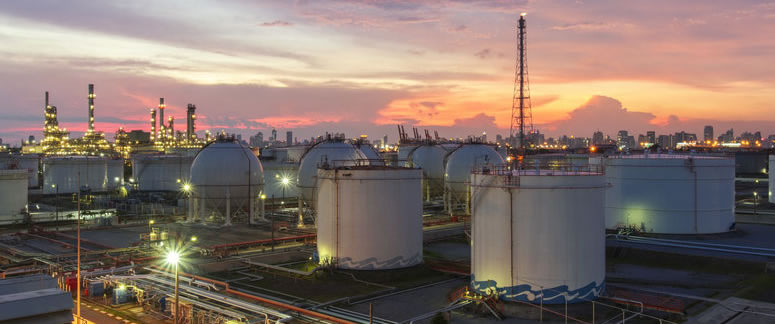Mitigating Turnaround Discovery Risk
Recently, a Becht Inspection Planner was preparing the Inspection Turnaround Plan for a client’s HF Alkylation Unit. When reviewing the unit’s equipment histories the Planner found documentation stating the Iso-Sidecut Receiver (14’X30’ @ 30ft elevation) had scattered hydrogen blisters on one elliptical head from the past two inspection reports. The inspection recommendations were to monitor if the blisters had increased in size and reassess during the internal visual discovery inspection on the impending turnaround. However, the planner did not find data detailing the number or size of blisters or NDT reports to assess if the vessel had been assessed for Hydrogen Induced Cracking and Stress Oriented Hydrogen Induced Cracking (HIC-SOHIC). In addition, there was no documentation indicating this recommendation had been reviewed or approved by the client’s metallurgical subject matter expert. Surprisingly, this is a common occurance often encountered by Becht’s Inspection Planners when reviewing inspection histories for a turnaround.
Due to the vessel being in HF Acid service, the Inspection Planner was cognizant that this vessel posed the highest RBI Consequence of Failure Risk (COF) per the client’s Risk Matrix. He was also aware that the Probability of Failure (POF) of the vessel had exponentially increased due to the presence of HIC-SOHIC Cracking potential that could be associated with the blisters. However, the POF condition was not identified and included in the RBI software calculation. Therefore, unknown to the client, the actual RBI risk was significantly higher. As a result, this vessel posed a serious regulatory liability to the client if this vessel would have had a loss of containment failure.
Having identified the Environmental Health & Safety (EH&S) liability this vessel created for the client, the Planner also identified that this vessel posed a high business risk to impact the turnaround’s cost, schedule, and potentially delay the unit start up. He notified the client that waiting until the turnaround to perform an internal inspection of the blisters to ascertain if the vessel would require repairs created a significant unknown discovery risk during the turnaround.
To mitigate these two risk factors, the Planner presented a “what if” assessment to the client’s refinery leadership team to address the vessel’s risk liabilities and provide recommendations to mitigate discovery impacts to the turnaround. The primary recommendation was for the client to fund a pre-turnaround inspection totaling $50K to scaffold and use automated UT to inspect the vessel’s elliptical head for advanced HIC-SOHIC Cracking. It was emphasized that this inspection was vital to determine if this vessel was serviceable per regulatory standards and assess if the head would require repairs or need to be replaced during the turnaround. The Planner provided a cost benefit analysis to detail the value this inspection provided to mitigate discovery risk for the turnaround. The client chose to incur this expense.
The automated UT inspections were performed and revealed the hydrogen blisters were shallow and exhibited no associated HIC-SOHIC cracking. The client’s subject matter expert assessed that the vessel was in serviceable condition. Once the Planner had this information, he was able to prepare an inspection plan for the vessel to perform an internal visual inspection of the vessel for the turnaround. The internal visual inspection during turnaround verified the vessel was in serviceable condition. The non-intrusive inspection substantially mitigated the client’s regulatory and business risk prior to the turnaround. In addition, the UT data now provides the necessary baseline data to assess if the blisters remain in serviceable condition for future operations of the vessel.
If the automated UT report had indicated that the vessel required weld repairs, the Inspection Planner would have organized meetings with the client’s subject matter expert, inspection, and contractor to assess weld repair options or the requisition of a new 14’ elliptical head. Several factors would have to be evaluated by this team to determine optimal options. Repair plan options would be developed, planned and scheduled prior to outage.
Consider the impact to the turnaround cost and schedule if the client would have waited until the turnaround
to assess this vessel and develop a repair plan during a turnaround.
For example, suppose the vessel had advanced step wise cracking requiring extensive weld repairs. Requisitioning a new 14’ elliptical head during turnaround would impact the cost and schedule of the turnaround. Vessel weld repairs would require grit blasting, hydrogen bake out, weld repair and coordinate inspections wearing full alky personnel protective equipment. Developing a major inspection repair plan during a turnaround would have significantly impacted the cost and schedule for this outage.
Many may question if there was value to spend $50K to inspect this vessel pre-turnaround versus waiting until the turnaround to evaluate and repair as necessary. Two additional factors were considered by the client in justifying this costs. The first factor was inspection planning had reduced the inspection scope $887K for this outage utilizing non–intrusive inspections on other equipment. The second factor was there has not been a major discovery repair that impacted turnarounds at this facility since Inspection Planning began utilizing risk mitigation planning assessments in 2011. Moreover, since 2014 this facility has attained the ”Best in Class“ status for a major U.S. refinery.






